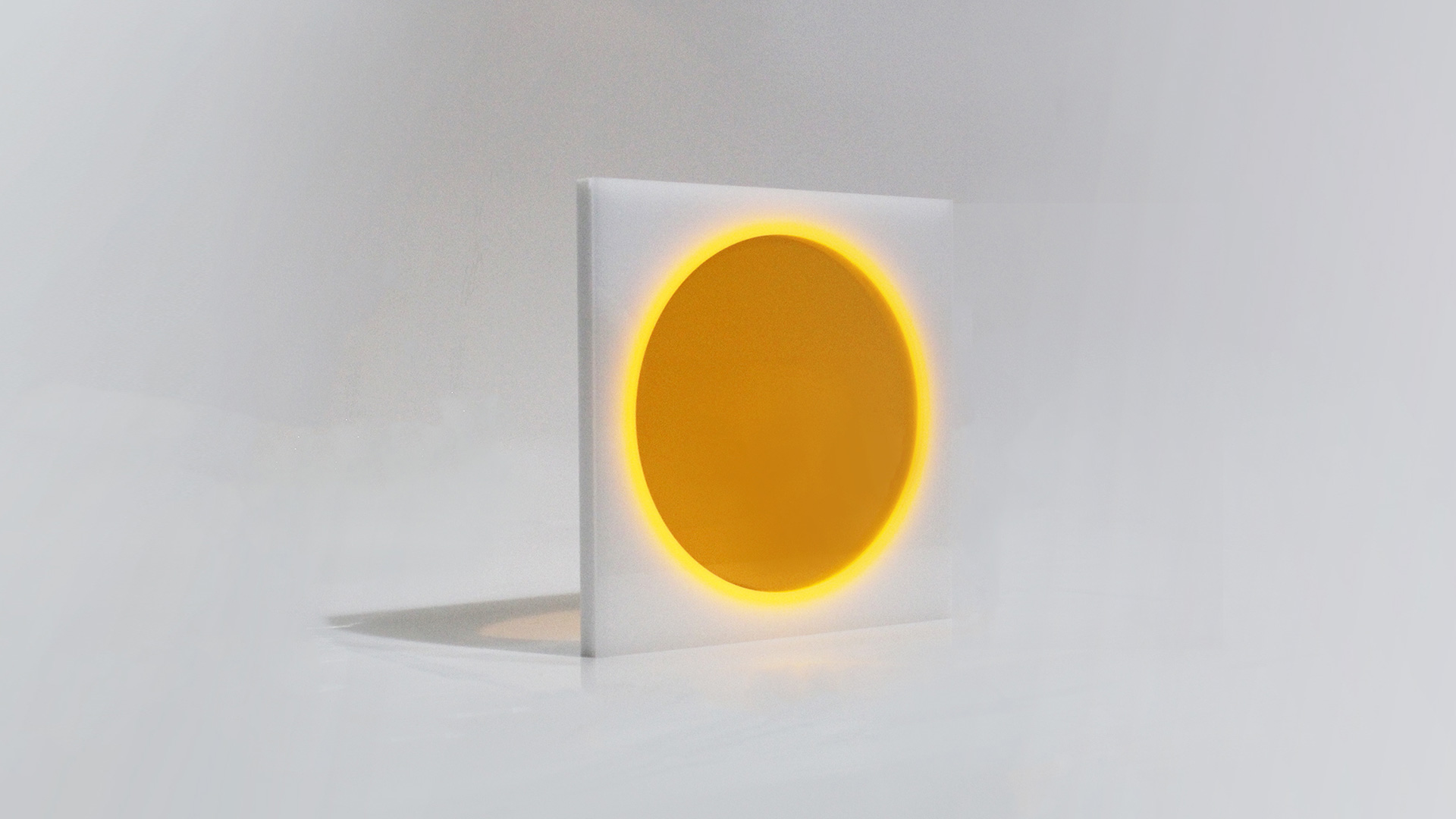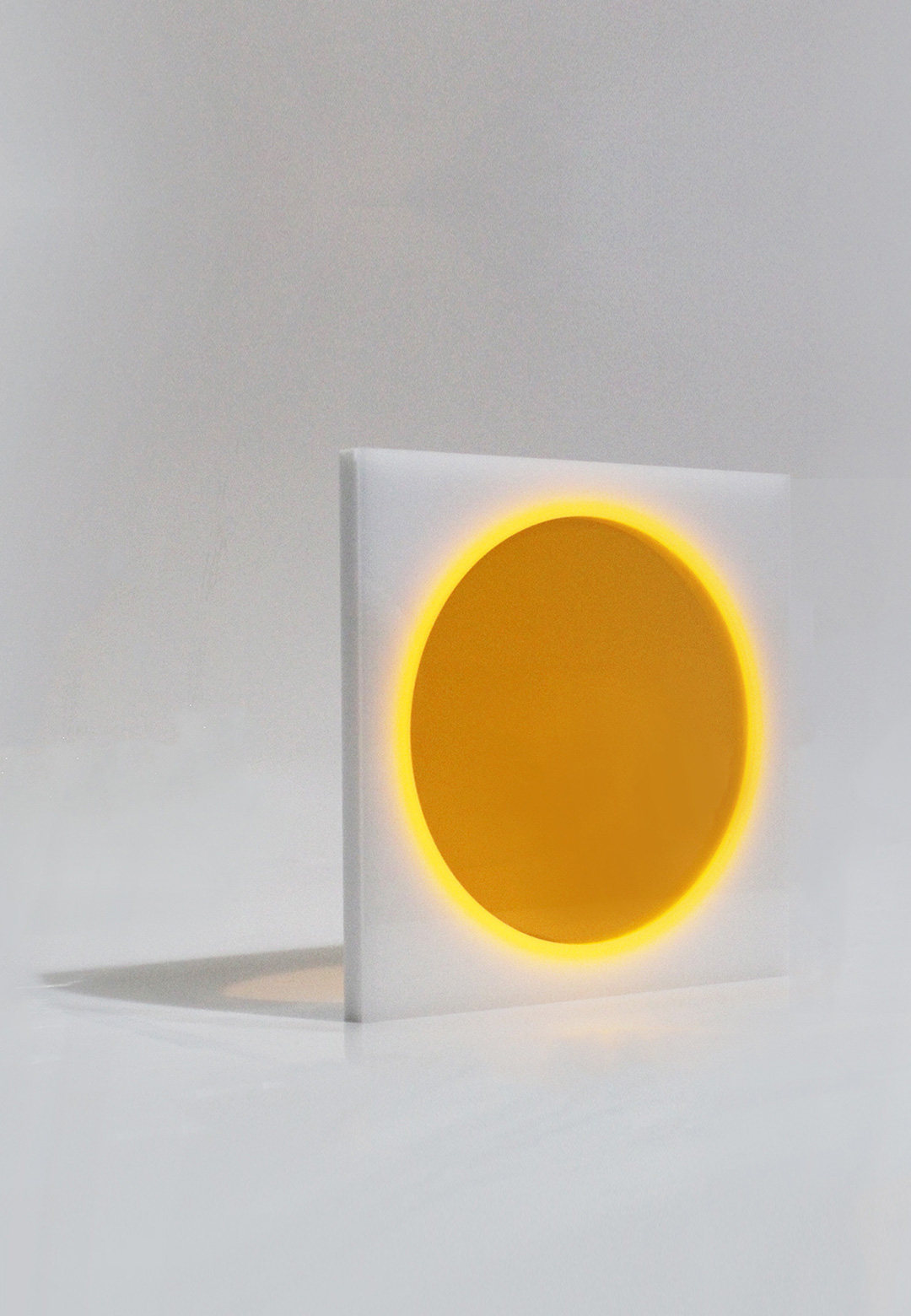Lighting, in private, public, and commercial applications, accounts for a good chunk of global energy use as per current estimations. As the world finds itself in the middle of an energy crisis, one where nations all over are scrambling to find more sustainable and efficient means to meet their power needs, there is even more of a drastic necessity to switch to low-energy lighting, or lighting that renounces the use of power sources altogether. In a move towards this new dawn for the field of lighting design, Japanese designer Yuichiro Morimoto has unveiled exactly one such product, which makes use of light-gathering acrylic to provide illumination without electricity.
Named for the Japanese word for solar eclipse, ‘Nisshoku’ boasts a design exuding minimalism, consisting of a simple square panel with a luminescent circle at its centre. As the product design gradually collects ambient light from both natural and artificial sources, the circle begins to light up along its edges. When this intensifies, the effect is similar to that of an annular eclipse, replicating the visual character of the ‘ring of fire’ observed in the sky, which is in a way, the origin of the project’s name.
Speaking to STIR, Morimoto, the mind behind Nisshoku, reveals about the product’s conception: “At first, I wanted to create a lighting element that does not use electricity. While walking around Hands (a large home improvement store in Japan), looking for a way to achieve this, I found a piece of a board that appeared to glow.” He elaborates, “It was a special acrylic board that had the property of collecting light from its surroundings and emitting it at the edges. I decided to use that as my material. I thought about how to make this soft light look beautiful and repeated several experiments.”
These experiments were the genesis of his design for Nisshoku, which softly lights up any environment it is placed in. Even if the intent was not always to create a fixture resembling a solar eclipse, the final product channels this aesthetic precedent immaculately, and still manages to fulfill its function as a light that does not require any power source. As he notes, “I actually did not have the eclipse in mind at first, as I only made it with the idea of making the light bigger. However, I wanted to eliminate arbitrariness and convey the concept with greater clarity. As a result, I created something that looked like a solar eclipse, so I called it Nisshoku (which means ‘solar eclipse’ in Japanese).”
However, with all these factors considered, Nisshoku’s role in an interior design is not that of a focused lighting element, but actually as an aesthetic effect that emits diffused ambient light, contributing to the atmosphere of a place in a different vein. “The product by itself cannot provide illumination for intensive task lighting applications, but I hope it will be recognised all over the world as the first step towards ‘electricity-free lighting’ and become a ‘trigger’ for this approach. I myself intend to continue my research,” explains Morimoto.
Regarding Nisshoku’s structural makeup, the product designer states: “Nisshoku is made of only three types of acrylic: orange acrylic to collect light, milky white acrylic to diffuse light, and regular white acrylic as the base (this is one of my favourite points). The base size is 20cm x 20cm x 1.4cm, but it can vary as per functional requirements.” This incredibly simple assembly, coupled with its minimal design language, sets the product apart in terms of its potential scalability, once the challenge of optimising and enhancing its light emitting capability is addressed. With all this in mind, Nisshoku makes a compelling statement on how the future of lighting could imbue true circularity into its operation, not only through the upcycling or recycling of its components, but also in the very mechanism of its function.






 Sign in with email
Sign in with email










What do you think?